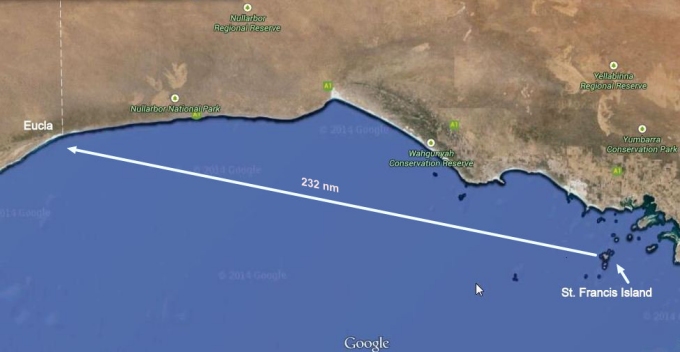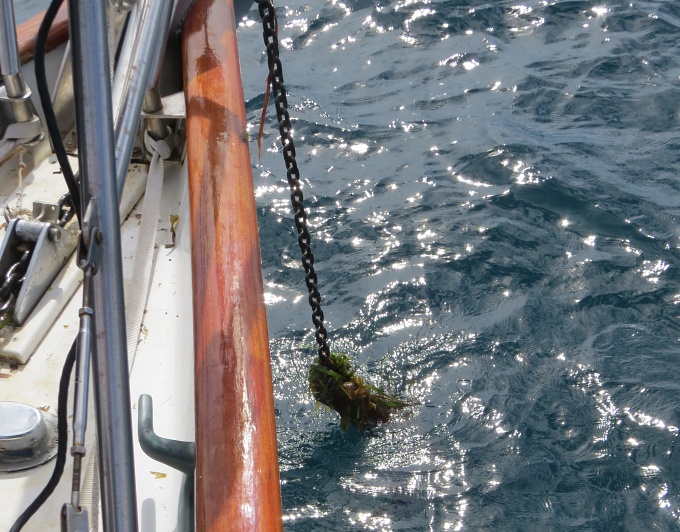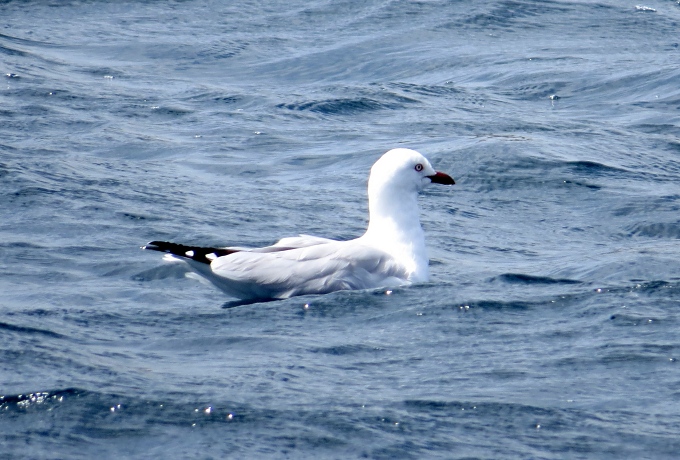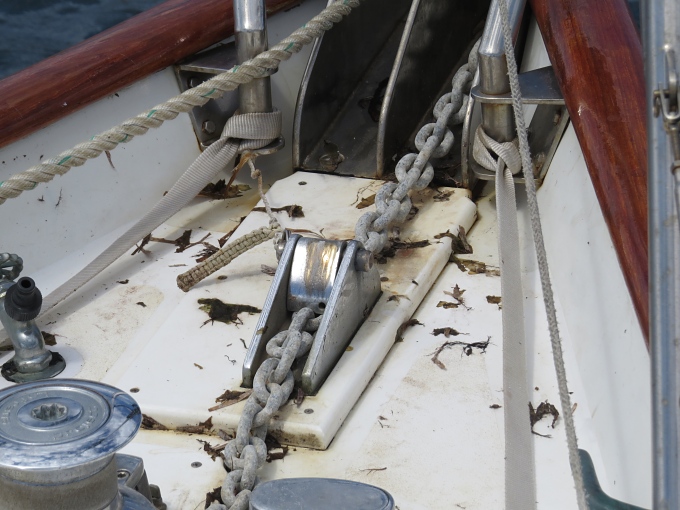Arrival at Eucla Roads
/The night and day passed blissfully calm. The light easterlies were perfect for our downwind sail pace to insure a mid-morning arrival time at Eucla. Once again, the skies were clear for a near full moonrise, a knock-your-socks-off sunset and a star-studded sky.
Just after 0500, a squall (luckily on the tail end of David's watch) gave us an adrenaline rush (mine from my bunk) as the light easterlies became a 35-knot burst from the SW, overwhelming our poled-out jib. David handled it admirably and had all under control before I even awoke from my sleepy stupor and offered help. Gotta love my captain. I was up shortly thereafter for my 0600-0900 watch, but the radar showed all clear. That said, my previously “star-studded” sky was now obscured by heavy clouds and the boat was surrounded by pitch black night. Sunrise wasn't due till 0812. Lazy, lazy sun in this western part of South Australia.
We are usually prudent when arriving at an unfamiliar port, but in the case of Eucla, we were particularly cautious. Whenever the charts indicate “inadequately surveyed”, it gets our attention. We had a guide book and sketches from a fisherman indicating how to approach Eucla Roads and where the anchorage was. The appealing aspect of this anchorage was that it was behind a huge sand bar which deflected the SW swell and waves and yes, it was off the beaten track. The less appealing aspect was that no depths and little information appeared on our charts. We needed to feel our way in and wanted to do it in good light. The landmark to watch for was “Wilson Bluff, which is 90m high and of dark rock and east of which the lower cliffs are white.” Would we really be able to discern this? Well, yes, it was pretty noticeable actually.
We followed the notes implicitly, thinking at any minute we might be in the sand up to our through-hulls. We sailed directly to a point ½ mile (.8 km) offshore on the 129º longitude (which incidentally coincides with the state line between South Australia and Western Australia). We were on a rising tide for some extra insurance, but we never saw anything below 16 feet (4.8m) at mid-tide. No rocks, no shoals, just clear water all the way. We paralleled the cliffs and sand dunes for about 6 miles before spotting a derelict old wooden jetty, our landmark for dropping the hook. We settled in behind the sand bar known as Eucla Sands in about 15' (4.2m) of the clearest, most vibrant aquamarine water we've seen in ages.
Even before we backed down on the anchor, we had a welcoming committee. Tiny welcome swallows chirped and tweeted, hovered and fluttered, all around the boat before finally lighting on the pole which had yet to be stowed. They seemed quite content to rock in the breeze and observe our tidying up process.
Our timing was perfect. Within an hour of being settled and tidied up, the promised SW winds piped up … 20-25 kts. By the way, that tower you can see on the bluff behind the old jetty … it's a Telstra tower … five bar internet. Yahoo! Sometimes things work out just right.
















